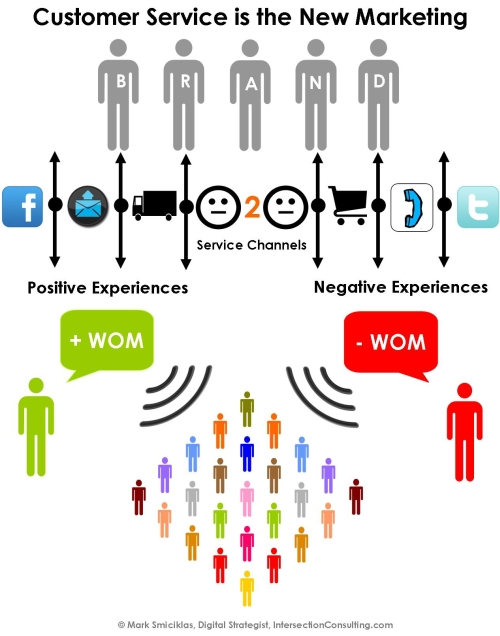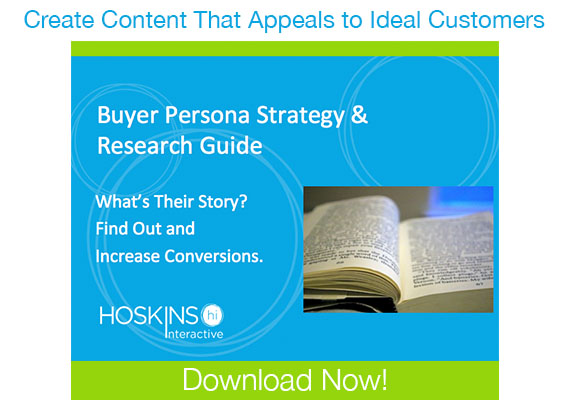Hoskins Interactive Media & Marketing Blog
Current Articles Rss FeedInbound Marketing Is Really a Growth Strategy for Small Businesses
Posted bywpbizSun, Sep 22, 2013 @ 1:19 pm
Most small business owners I talk to are just trying to catch up in the digital space—they are primarily concerned with breaking through online and becoming visible. Or making sense of social media. We’re stuck in the channels like hamsters on a wheel, trying to decide which activities are vital, cost and time-effective. Inbound marketing puts these activities in context, bringing growth and value to the business. But it requires a willingness to work—and see your business operate—differently..
We’re Used to a Traditional Structure, but This Kills Information Sharing
Many times, large companies get stuck. Information useful to other departments stays contained in marketing, sales and customer service departments because there is no efficient way to share it, no process or technology. Smaller companies have the advantage of being pretty agile—there aren’t silos or walls built up between the departments. And there is closer interaction with customers, which produces valuable information for all. But do you have a process or technology to do this?
Most likely not. The technology is pretty new. This week at HubSpot’s Inbound13 annual inbound marketing conference, updates to its all-in-one platform were unveiled. Here’s how they make information universally accessible and change the experience:
Content Optimization System (COS): gives your website visitor a personalized experience. The idea is to be relevant in their buying decisions—for example, a first time visitor sees content that differs from one in talks with sales. COS is smart enough to recognize people, the website content they visit, lifecycle stage and interactions. And it displays helpful information at any given time. This helps you direct their journey through your sales funnel.
Social Inbox: wouldn’t it be efficient if sales, marketing and customer service knew who is discussing your product/service and what they are saying in real time? Your team could step in and work magic, answering questions, providing information, offering something of value, demonstrating service. Social Inbox tracks lifecycle stage, so all parties can see if the contact is a person of interest, prospect, lead or customer, and they can send emails efficiently.
New Reporting: marketing can produce a lot of data and reports that leave an executive scratching his head. What in the world does all of it mean? The analytics here just got sharper, revealing information about segments. What do you want to know about the people coming to your website? The context available now is about giving you prospect/customer detail. Is Facebook generating enough IT CFO leads? You can find out. Website analytics don’t have this ability.
(Check out the press release for the full story on HubSpot’s platform additions)
“Content Plus Context” Generates More Business
Before making an investment, people search online for answers, ask around and compare products. The sales rep, though, has no way of knowing what they…know. It puts sales in tough spot, because they are trying to catch up to the prospect instead of leading the sale. But if reps were notified about a lead’s online activities, it’s easy to set a game plan for engagement.
That’s what HubSpot’s new app Signals makes possible: alerts describe what leads are doing online so that reps can add value when they take action. HubSpot CEO Brian Halligan explains, as a former sales guy, how sales can get back on top. Here’s more in his blog.
These tools allow close interdepartmental collaboration and a way to share customer context. And they came about because of a need: content marketing alone isn’t driving business. Content marketing as a standalone tactic is basically adding another channel. More stuff for us to juggle. Adding value to a business is much more complicated than that. We have to look at the way marketing, sales and customer service work together to turn a stranger into a customer. We have to help your business operate more effectively. That’s what inbound marketing is all about.
“But the data shows that ‘content marketing’ is not quite the panacea some in the industry claim. Rather, content created and distributed by marketers must tie in context on customers, from how they interact with your channels to CRM information to personalized, dynamic targeting and beyond. This approach of ‘content plus context’ helps inbound marketers truly delight consumers and generate more business.” – 2013 State of Inbound Report
Is your organization ready to work cross-functionally? As a small business owner, you are in a unique position to see the big picture. It’s not enough to know that you’re expanding your reach on Twitter. What does that really mean? Your business grows when sales, marketing and customer service use these inbound channels—blogs, email, social media, nurturing—in a integrated way. The tools make it happen. But the growth is possible because you embrace the concept.
Steve Jobs got us to think different. Are you ready to work different?
________________________________________________________________________________
Terra Hoskins wants to help small businesses grow—she’s experienced the power of inbound while managing marketing at a small company and seeks to share her knowledge as principal of inbound marketing agency, Hoskins Interactive. She tweets at @terrahoskins.
*photo by Intersection Consulting
Want to find out more? Here are a few blogs that discuss how your business will grow with inbound marketing:
- Choosing an Inbound Marketing Agency: Why We Talk About Your Business First. Read on…
- You Need to Invest Time or Money to Get Customers From Your Website. Read on…
- 6 Small Biz Ideas for Security, Productivity & Facebook Prowess. Read on…


